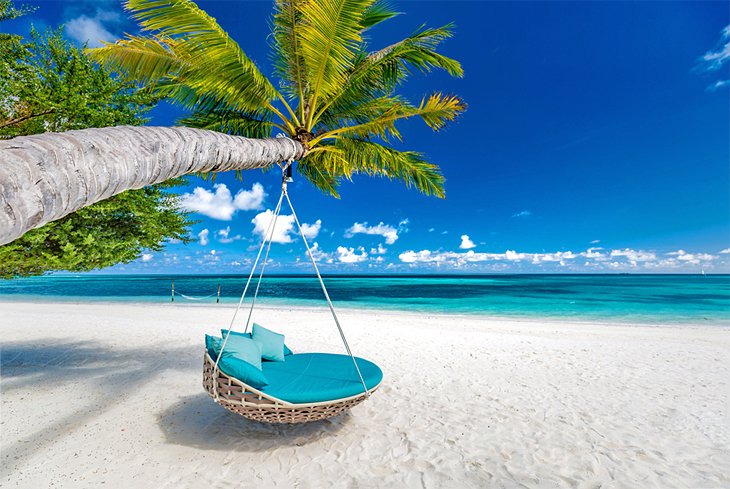Nick Walton travels to the former pirate lair of the Seychelles, where its rich heritage, colourful history and pristine beaches have made it one of the most sought after destinations in the world.
It’s nearly midnight as my Air Seychelles flight descends towards Mahe, the largest island in the Republic of Seychelles. Below is nothing but inky darkness, a testament to the archipelago’s distance from virtually anything. However, despite a sense of ambiguity (or perhaps because of it), and its far-flung location in the heart of the Indian Ocean, Seychelles remains a dream locale for many travelers; an untouched island paradise, where white talcum powder beaches and vividly blue seas are married with a unique ethnic diversity and some of the region’s most luxurious resorts.
George, a mountain of a man and my guide from Select Seychelles, a high-end concierge service that helps tourists fight the “island time” mentality, drives me towards Mahe’s west coast, beyond the chain of mountains which run down the island’s spine. From Mount Blanc, the island’s highest point, I can see little of the postcard-perfect coastline I know lies far below. The main ‘highway’ is a tiny route which winds through the mountains like a writhing snake and, rolling down the window, I breathe in air spiced with the cinnamon trees and tea plantations that grow alongside the road.
Constance Ephelia Mahé Seychelles floats in the darkness below like a piece of glowing amber, its villas and restaurants flanked on one side by a national park populated by impossibly steep peaks, and on the other by a pristine coastline.
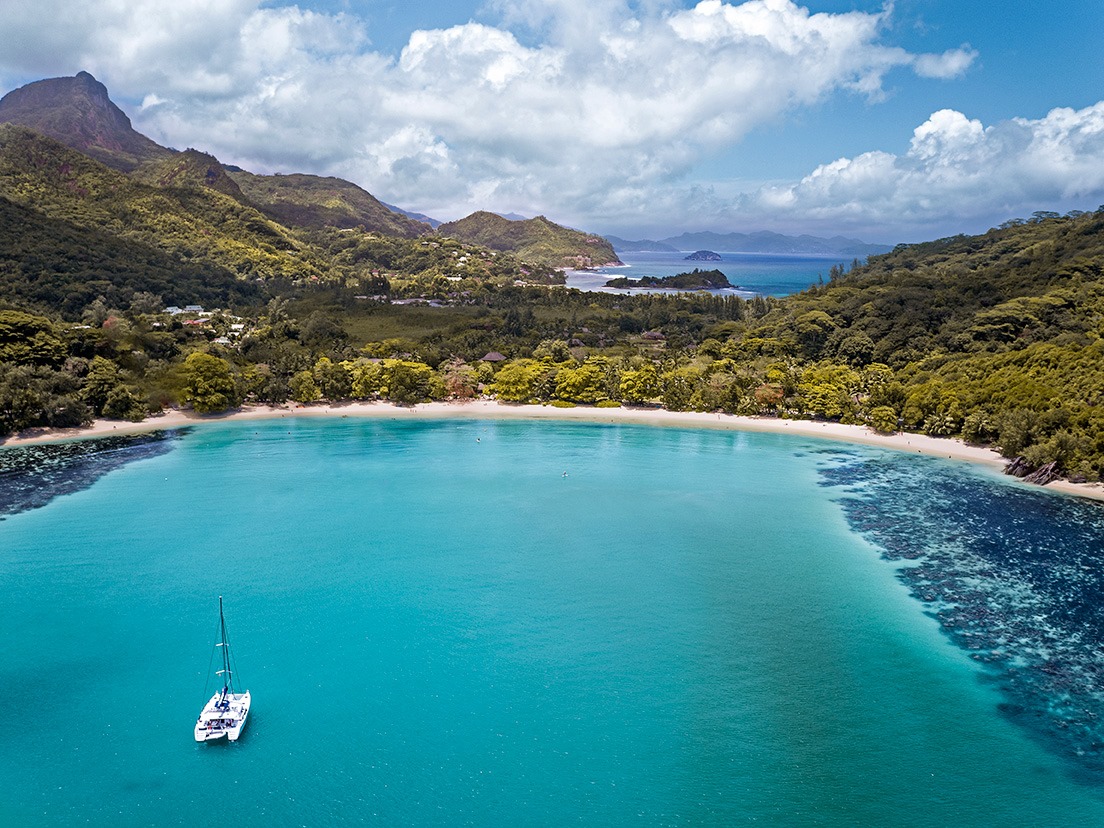
I spend the next two days exploring Ephelia, bathed in Seychelles’s famous but relentless sun. The resort has four beaches – two main and two more remote – meaning there is always a piece of paradise waiting for you, your towel, a good book and possibly a chilled bottle of champagne.
My Spa Villa (below), one of ten at Ephelia, not only boast a private pool and a separate, spacious air-conditioned lounge but in the living room-sized bathroom there is a deep Japanese spa bath, a steam shower, private sauna and two massage beds. As part of the Spa Villa welcome ritual, guests are pampered with a 45-minute massage while their villa attendant does the unpacking.
If you prefer a more comprehensive spa experience, Ephelia has one of the best spas in the country, with 12 thatch-roofed treatment rooms, a yoga pavilion, and three specialised Shiseido spa suites, all wreathed with tropical gardens.
After shrugging off the rat race over two days at Ephelia, it’s time to move on. George and I cross back over the mountains, this time by the picturesque Sans-Souci road, and before long Victoria, the tiny capital of Seychelles, appears far below. The ‘city’ is truly tiny – locals are still debating the merits of the recently installed second set of traffic lights – but it boasts a vibrancy that has existed since the time when Victoria was popular with French corsairs (read pirates) and traders.
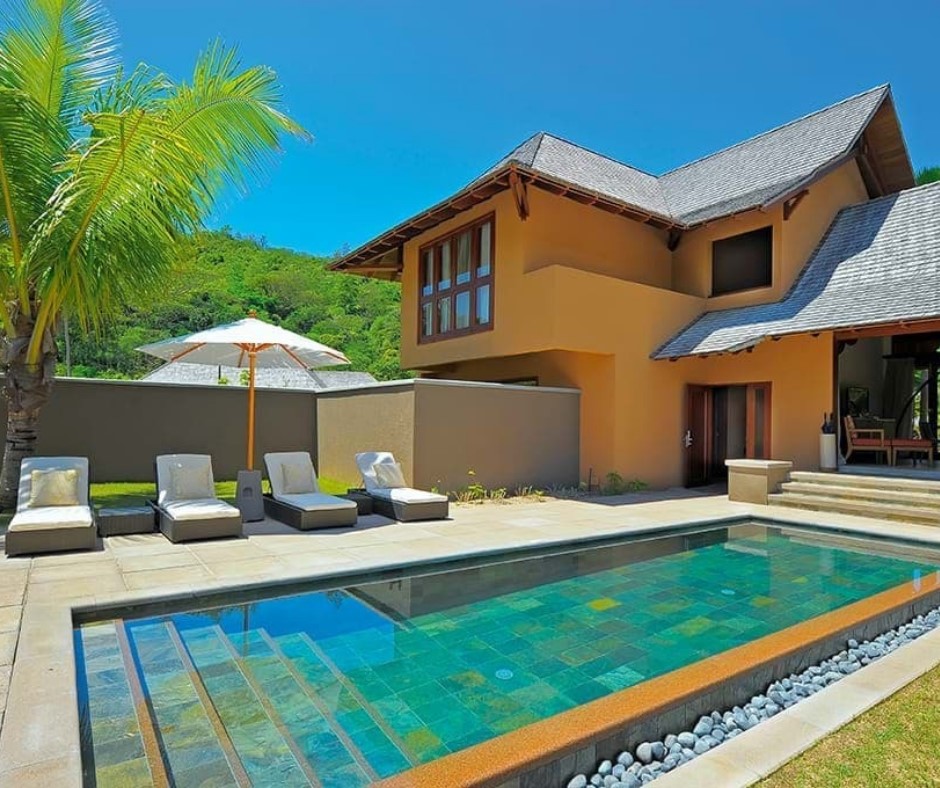
I delve into Victoria’s narrow lanes, flanked by brightly coloured colonial-era buildings. The Sir Selwyn Selwyn Clarke Markets are a hive of activity. Fishermen and middlemen yell out prices for fat, fresh tuna and vivid reef fish in Seselwa Creole, a local language that resembles mumbled French. In the vegetable aisles, plump elderly women, dressed in brightly coloured sundresses and straw hats, gossip behind tables packed with intensely yellow lady finger bananas (one of 30 varieties in the Seychelles), cracked coconuts, and brick-sized mangos.
I buy fiery homemade chilli salsa, a bag of local vanilla tea, and some cinnamon bark wrapped in yesterday’s Nation newspaper, and head to the more touristy corner, where a few European travellers barter for bottles of vanilla essence and coconut oil, sachets of nutmeg, and the odd carved and polished coco de mer nut.
The nut is a fitting national icon for this tiny Indian Ocean republic. Plenty of people have heard of this rare, Herculean-sized nut, which only grew on two tiny isles before conservation efforts lead to larger plantations further afield. For hundreds of years, before Seychelles were even discovered, people believed the world’s largest seed came from a magical underwater tree when it washed up on the beaches of the nearby Maldives and Mauritius.
However, ask people what to do with this peculiar nut, even in Seychelles (it’s used in Chinese medicine but little else) and no one’s quite sure. A similar number will be able to point to Seychelles on the map, and therein lies much of its appeal.
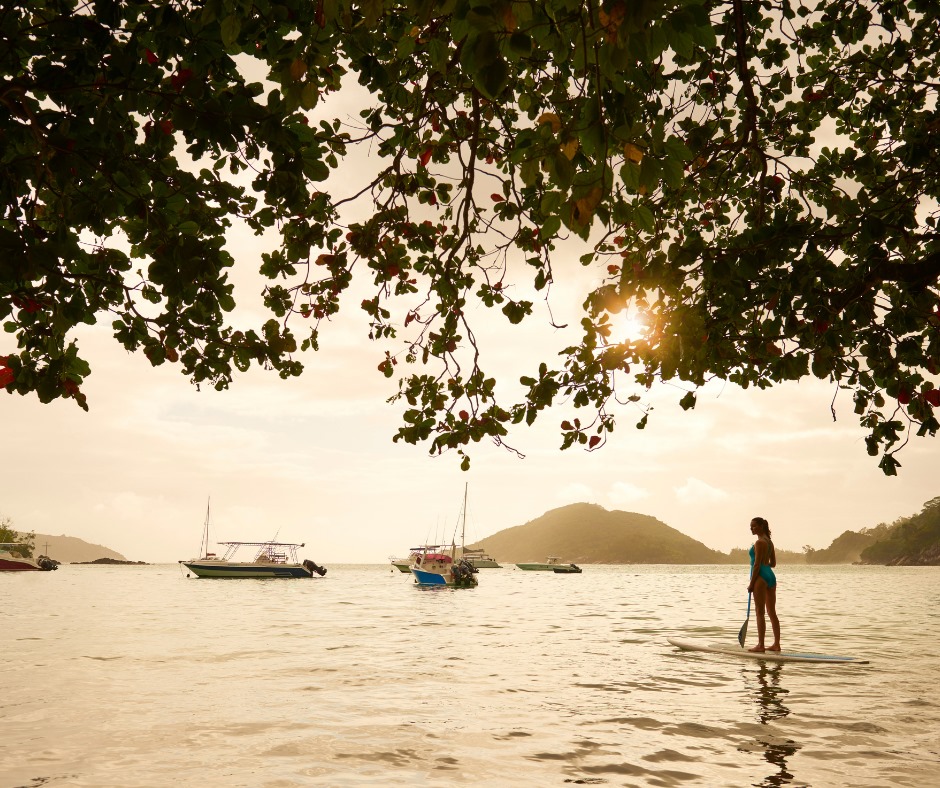
An archipelago nation of 115 islands, many of which are little more than granite teeth lunging from azure seas, Seychelles is a curious place. It’s had both French and British occupation, hopeful plantation owners trying, and failing, freed slaves given a new – if not isolated – home in paradise, and pirates living on its islands and anchored in its deserted coves (even today treasure hunters scour the northern beaches of the main island of Mahe for the treasure of feared pirate Olivier Le Vasseur, said to be valued at US$500 million).
Consequently, Seychellois are the ultimate blend of ethnic and cultural backgrounds. Their language may sound French but there is a replica of Big Ben that holds prime real estate in the centre of Victoria. In the markets, stallholders are every shade between black and white, and blonde hair is as common as black, blue eyes as common as brown.
From the capital, I take a speed boat out to North Island, riding waves which become increasingly turquoise as we close in on the dog bone-shaped private island an hour from Mahe. The wow-effect comes when we putter into the main bay, where the most perfect beach I have ever seen, almost blinds the eye with its pale hue.
North Island, once owned and operated by Wilderness Safaris and now a Luxury Collection resort, its nothing short of awe-inspiring. A relatively tiny resort, with just 11 villas – all of which boast the title “Presidential” with grace and elegance – North Island is somewhere you disappear to, or perhaps go to discover yourself.
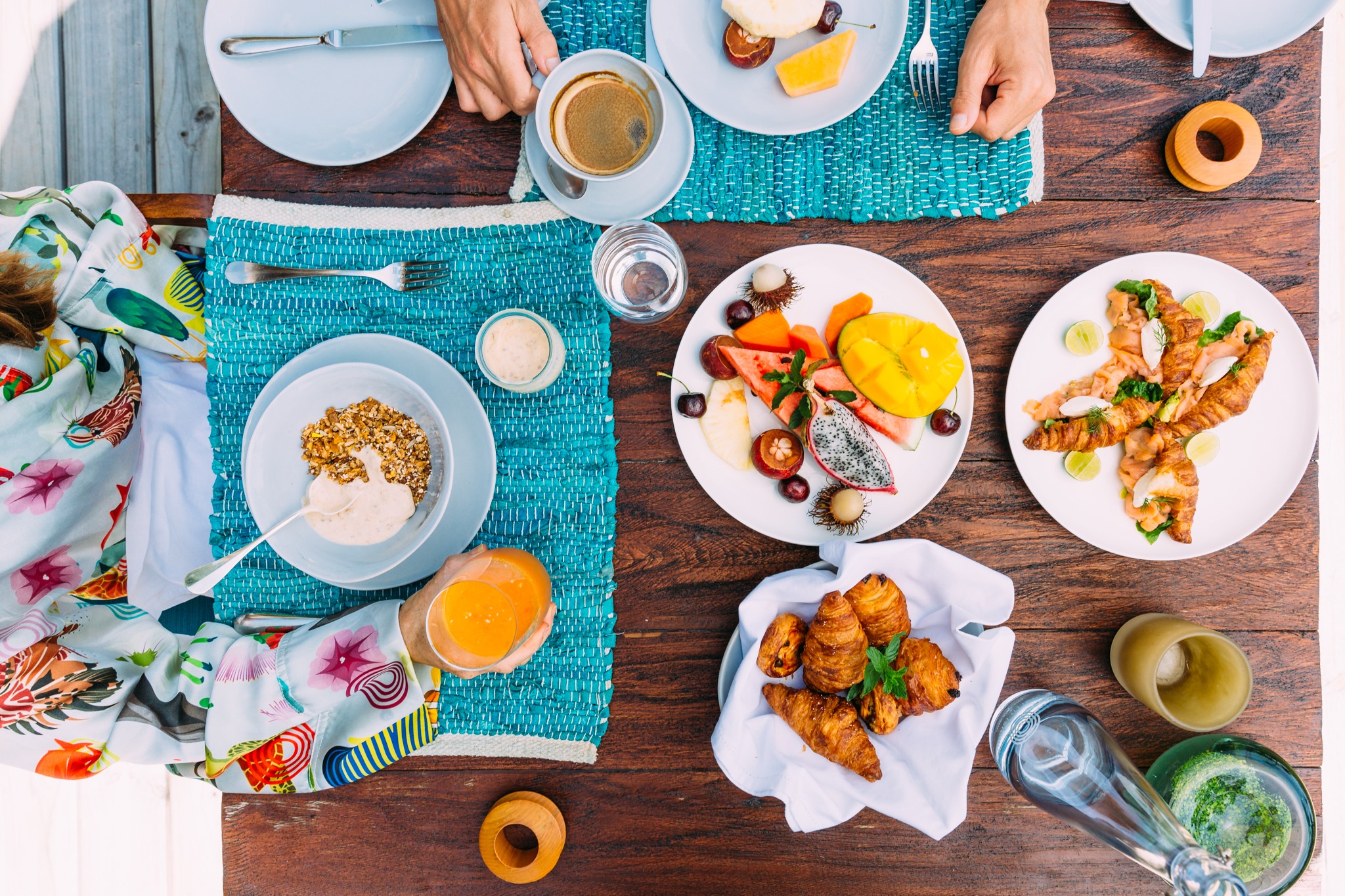
Our boat beaches itself with a sigh and I vault overboard into calf-high bathtub-warm water that’s so clear you can read the ridges on the occasional pebble underfoot. After a quick check-in at ‘reception’ (a rather formal word for a place that is blessedly informal) and a discussion with the chef as to my culinary likes and dislikes (that’s as formal as the menu gets), I head for my villa.
Villa number 7 is sprawling. Under siege by natural vegetation – replanted as part of the island’s comprehensive 40-year conservation effort – the path leads to a house of slumber Robinson Crusoe would have been proud of. Made almost entirely from wooden logs and beams, a central, open-air living space branches off into two exquisite bedrooms, a master which boasts a massive bathroom with outdoor shower and soak tub, and a slightly smaller but no less lavish second suite. At the centre of the villa is a swirling whirlpool and shaded sala, with the whole villa looking out across a line of coconut trees and the pounding surf beyond.
It’s already late afternoon and my trust buggy and I tackle the bush track through the island’s thick jungle core, in search of sundowners at the West Beach Bar. I have to slam on the breaks (as much as you can in a golf buggy) when I come around a tight corner in the track to find the route blocked by ‘Disco Harry’, one of the island’s 50 giant tortoises. This one especially likes to lie in the road and is so named for the reflective safety stripes painted on his side by concerned staff. After some pondering looks on both sides, I drive around nature’s speed hump and eventually find my way to a cool beachside watering hole bathed in warm afternoon sunlight.
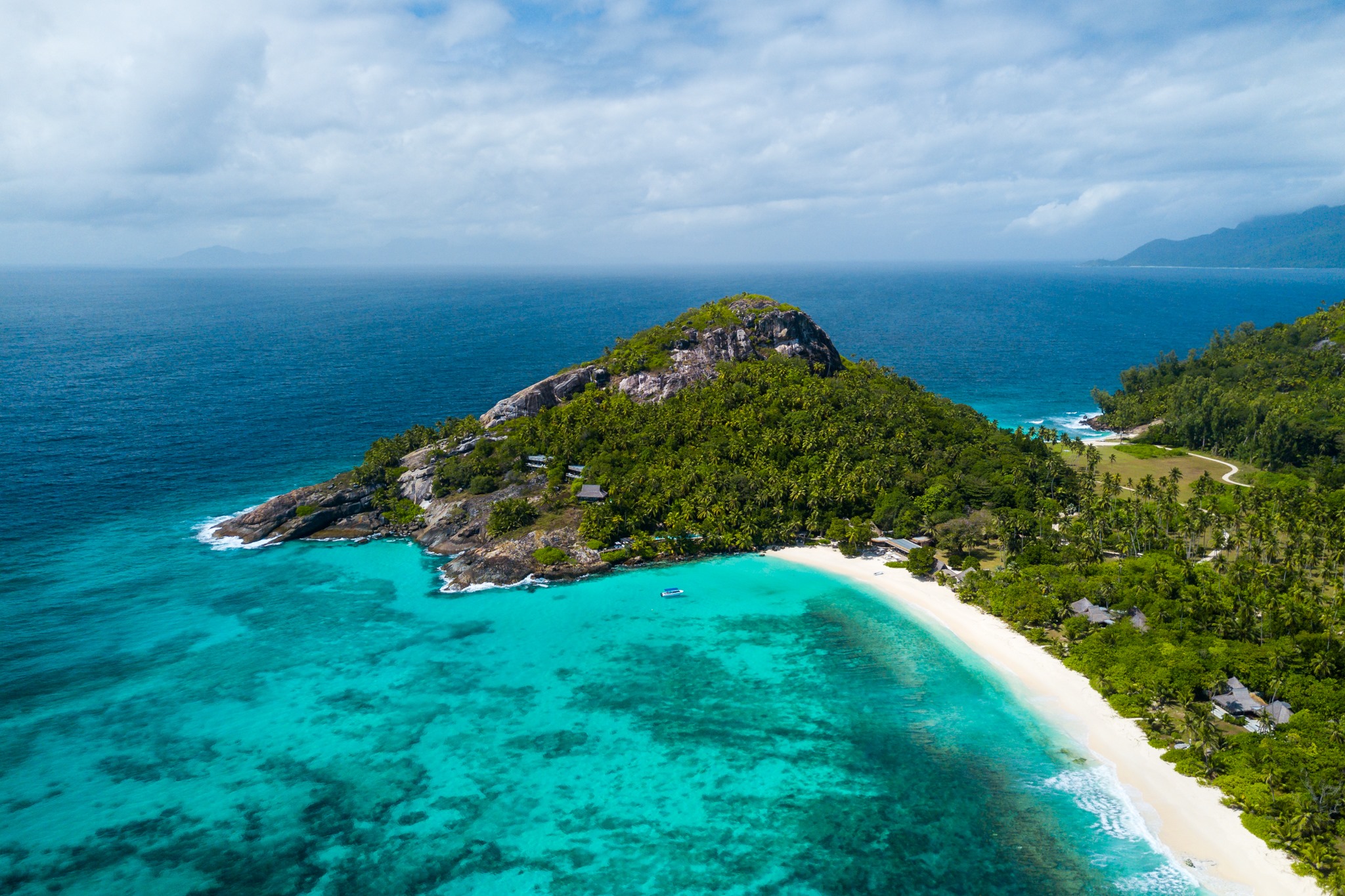
The bartender seems pleased to see me; I’m one of the few guests and after watching him take down a skull and crossbones flag from a palm tree, a leftover decoration from a themed cocktail party, he makes me a Mai Tai with local Takamaka rum and leaves me to the setting sun and Bob Marley’s Fussing and Fighting.
One of the best things about North Island is that it’s an all-inclusive resort – which makes sense because the nearest 7-11 is quite some distance away. This not only covers all alcoholic and non-alcoholic drinks not on the reserve list (and what a reserve list it is! The wine cellar is filled with drops that would make an oenologist sigh), but gourmet meals, enjoyed in the restaurant or in the villa (or almost anywhere else you can think of), and activities, including half-day fishing and scuba diving. With plenty of fish on offer and water visibility around the island up to 40m, I decided to try my hand at both.
The water is clear and warm and wearing only a rash shirt under my dive gear, I take the plunge from North Wind, one of the resort’s dive boats, into azure waters to explore the reefs of Coral Cove, a popular dive site on the island’s western coast. Tropical reef fish of all colours and shapes, including butterfly and parrotfish, jacks and lionfish, follow divemaster Craig and I along the reef, which, at 18 metres, is an easy dive. After an exhilarating 40 minutes of exploring the coral plumes and their inhabitants, we drift to the surface and the sunshine.
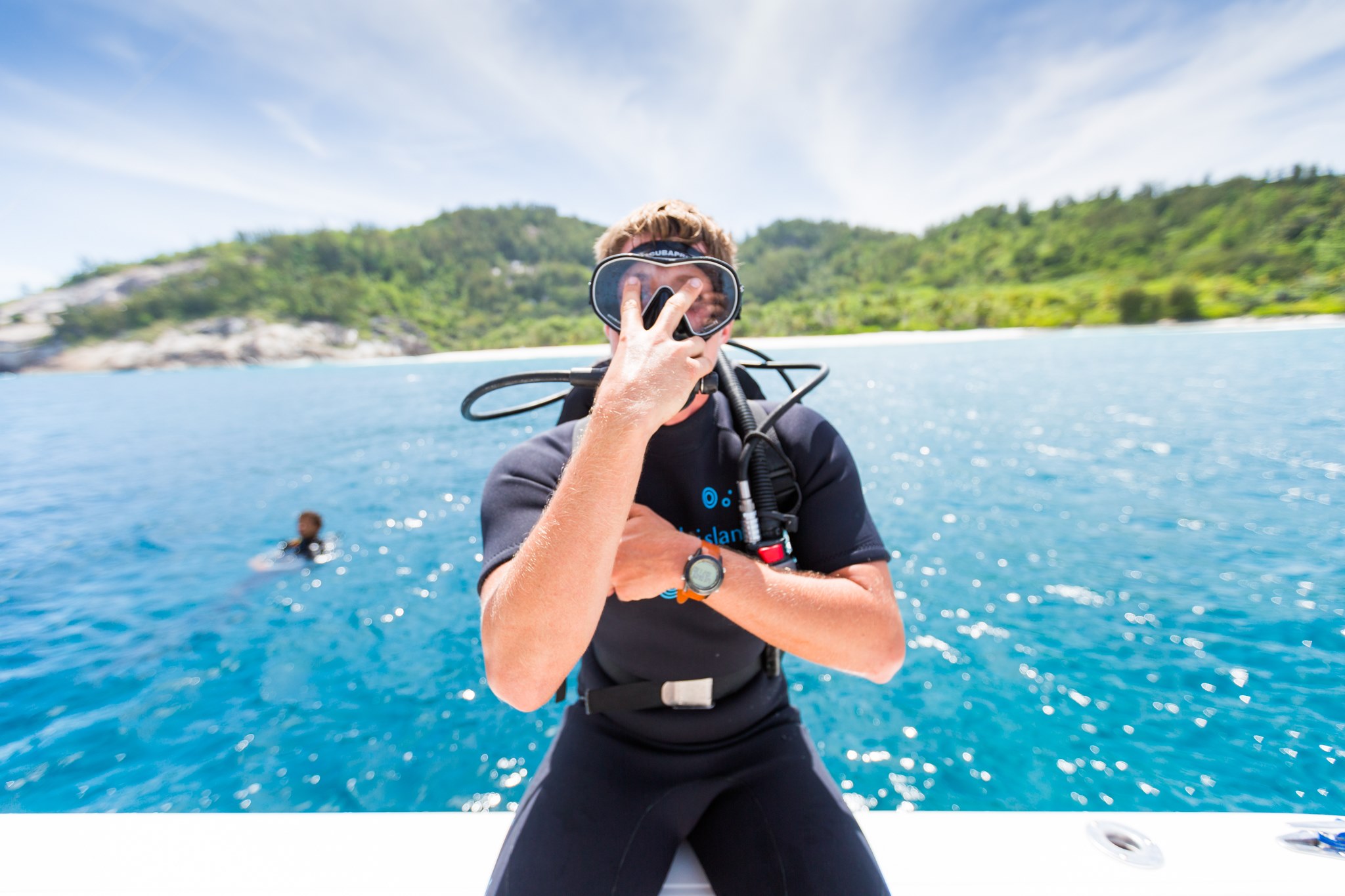
After lunch, I snorkel off the coast of neighbouring Silhouette Island. It’s Seychelles’ third-largest island and has formidably steep sides. Below waves pounding against ancient boulders, I follow a trio of Napoleon wrasse as they edge along the drop-off, looking for a late afternoon snack.
It’s been a great afternoon of diving and snorkelling but there have been few bites on the fishing line, until suddenly it kicks, the reel whizzing into action. Our boat hand, Steven, grabs the rod and passes it to me and I fight for the next 20 minutes to land a 20kg sailfish, the first the boat’s crew have seen for nine months. The battle won, we slide the beautiful fish back into the sea unharmed, as is the North Island tradition. I was quite content with the sizable barracuda I’d caught earlier in the day and which the chef had already promised to cook Creole style.
It’s with a great reluctance the next morning that I leave North Island, but a new Eurocopter from Zil Air is waiting at North’s helipad for the quick trip back to Mahe. The pilot, who says flying day-trippers and resort guests between the islands of Seychelles is a reward for all the years of being shot at as a police helicopter pilot in New York, points out turtles and dolphins easily visible 1,000 feet below.
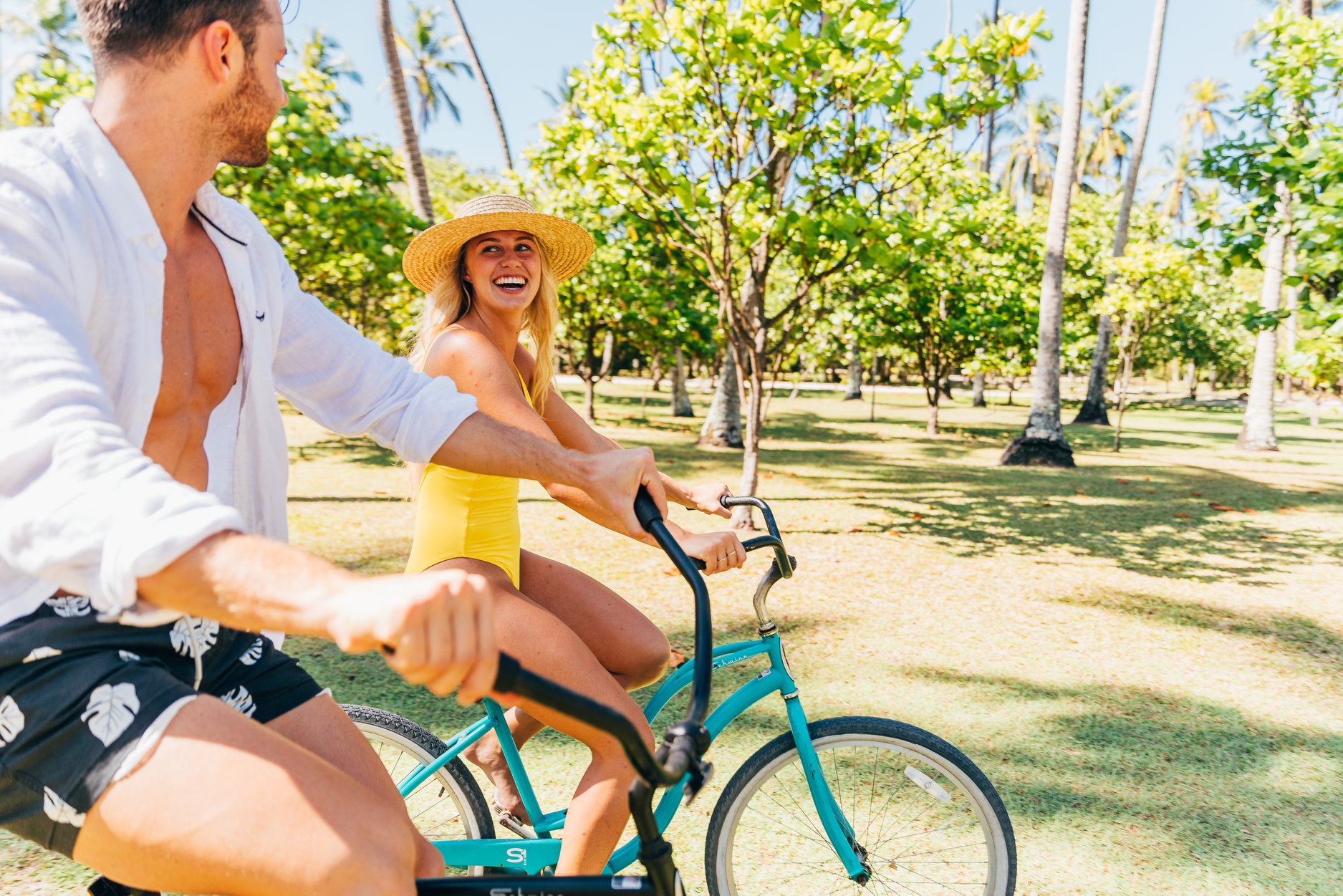
After five days exploring these idyllic islands, I now know that pirates buried their treasure in the Seychelles, not so much for safekeeping but as the perfect excuse to return to this, a paradise found.
For more Destination inspiration click here.

